
By gathering the voices of everyone, a terrible situation in the Japanese Catholic Church has come to light.
previous post
Harm associated with Holy Communion on the tongue in Japan
According to the survey results, as many as 24 members of the Church have been victims of rejection, rebuke, or insult for receiving Communion on the tongue. In total, 50 such incidents have been reported. Because the survey was conducted on a small personal blog, the actual number of victims is likely higher, and I believe some of them may have already passed away.
After the Japanese translation of the Instruction Redemptionis Sacramentum (which reaffirmed that receiving Communion on the tongue and/or while kneeling is not prohibited) was published in August 2007, many victims’ experiences came to light. The number of cases in the Archdiocese of Tokyo is particularly high.
Results of the survey are as follows.
NOTE: The following are examples of rejection, rebuke, and insult directed at Catholics who wish to receive Communion on the tongue.
Some priests in Japan have made aggressive remarks such as:
“You are like a dog.”
(Some priests in Japan are intolerant of Catholics who stick out their tongues to receive Communion.)
“You Japanese should receive Communion in the hand, not on the tongue!”
(A Japanese priest got furious at a friend of mine.)
“Stand up!”
(said to a Catholic who was kneeling.)
Table of Contents (目次)
Results of the survey
Summary of Results
- Survey period: May 31st, 2019 – July 3rd, 2019 (approximately one month)
- Survey method: Google Forms
- Total number of respondents: 68
(67 baptized faithful and 1 catechumen; including 2 responses submitted by proxy) - Total number of respondents who reported being victimized: baptized lay faithful and 1 catechumen
- Total number of reported incidents of victimization: over 50
(the wording “over” reflects the survey option “more than three times”) - Remarks: Following the publication of the Japanese translation of the Instruction Redemptionis Sacramentum in August 2007, the number of reported incidents appears to have increased significantly. The dioceses with the highest number of reports were the Archdiocese of Tokyo, followed by the Dioceses of Fukuoka and Yokohama. This observation is based on the responses collected and represents the compiler’s interpretation of the data.
NOTE
- Please feel free to use the graphs and survey data provided below.
- Two of the victims also responded as eyewitnesses; however, they have not been double‑counted in the “total number of respondents.”
- Because some answers could not be accurately categorized, the data aggregated from multiple survey questions under‑represent the actual number of responses from victims.
- The following results include only the responses of 67 baptized members of the Church. An individual awaiting baptism was discussed in a previously published article.
Forcing Communion in the hand on baptismal candidates—thereby causing them to withdraw from baptism—reflects a loveless climate within the Catholic Church in Japan.
Survey Questions and Responses
Q1. Have you ever been denied Communion on the tongue or rebuked by priests for receiving Communion while standing or kneeling?
(This includes cases where the communicant was ultimately able to receive Holy Communion after an initial refusal or reprimand, as well as any reprimands issued after Holy Communion had already been received.)
- Yes, I have been personally victimized: 24 respondents (36%)
- No personal experience but have witnessed such incidents: 9 (13%)
- No personal experience but aware of such incidents: 28 (42%)
- No experience and unaware of any such incidents: 6 (9%)
91% of all respondents (61 in total) have either experienced or observed such incidents.
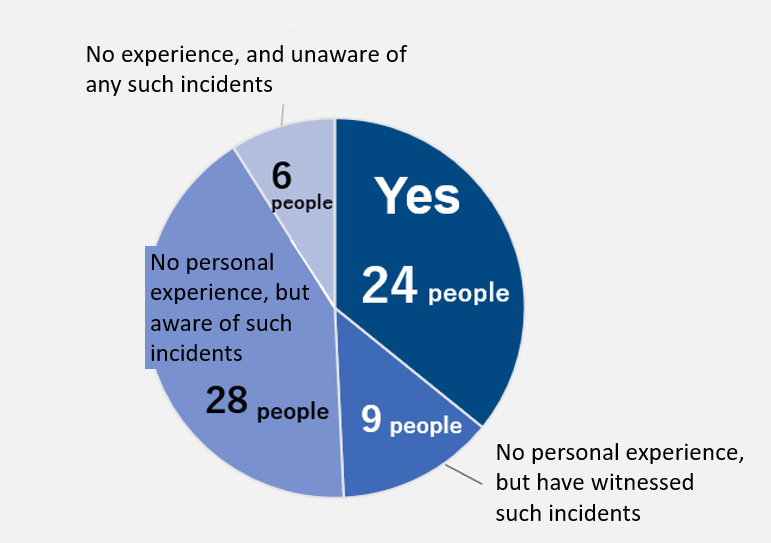
Section A: Respondents Who Have Been Victimised (24 individuals)
Q2. What was your posture when victimized?
- Kneeling to receive Communion: 17 people
- Standing: 3
- Both: 4
Over 70% of respondents were kneeling when victimized.

Q3. On how many occasions were you victimized?
- Once: 9 respondents (37%)
- Twice: 4 respondents (17%)
- More than three times: 11 respondents (46%)
NOTE: For computational purposes, responses of “more than three times” were counted as three.
This suggests that over 50 distinct incidents occurred.
In addition, 11 respondents reported that they have been victimized on more than 3 separate occasions.
(I think they are just like Kirishitan.)
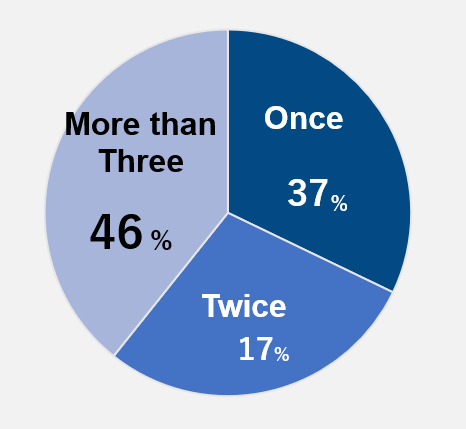
Combined data from Q2 and Q3:Communion posture and the number of separate occasions on which respondents were victimized
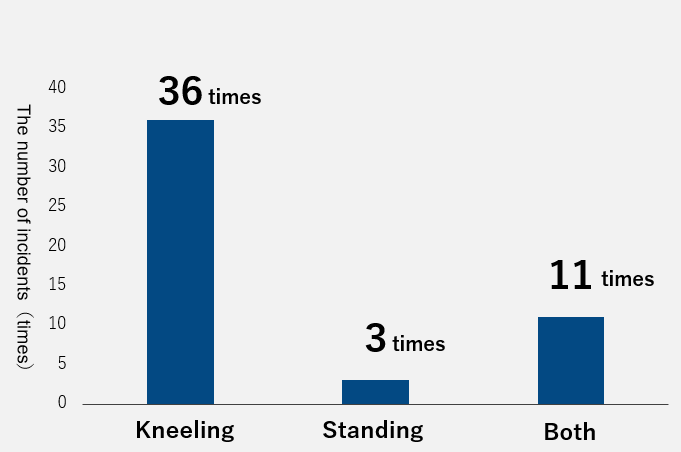
The above bar chart, Fig. 4, was obtained by combining the data from Q2 and Q3.
Q4. When did the incidents occur? (Multiple answers allowed)
- 1980s: 1 respondent (1 incident)
- 1990s: 5 respondents (7 incidents)
- 2000 – July 2007: 5 respondents (5 incidents)
- August 2007* – as of 2019: 20 respondents (36 incidents)
* August 2007: Japanese translation of Instruction Redemptionis Sacramentum was published.
The number of reported incidents rose sharply after the publication of the Japanese translation of Redemptionis Sacramentum in August 2007.
Q5. At what type of church did the incident occur? (Multiple answers allowed)
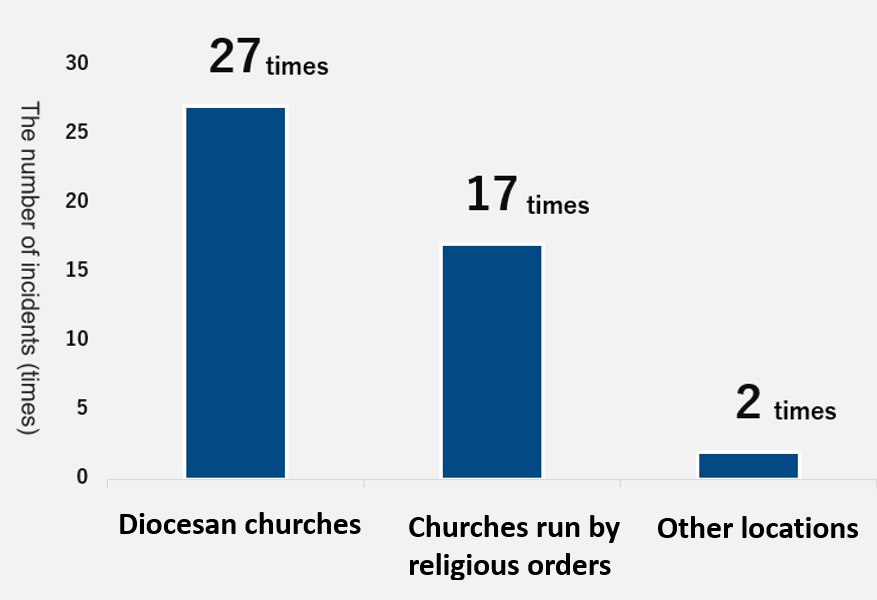
- Diocesan churches: 27 incidents (19 respondents)
- Churches run by religious orders: 17 incidents (11 respondents)
- Other locations: 2 incidents (2 respondents)
*NOTE: For computational purposes, 4 incidents could not be included in this tally.
More cases were reported at diocesan churches. (By contrast, in Section B, more cases occurred at churches run by religious orders.)
Q6. In which diocese did the incident occur? (Multiple answers allowed)
- Tokyo: 27 times
- Fukuoka: 6
- Yokohama: 5
- Sendai: 2
- Nagoya: 2
- Kagoshima: 2
- Sapporo: 1
- Hiroshima: 1
- Nagasaki: 1
*NOTE: 3 incidents could not be assigned to a specific diocese.
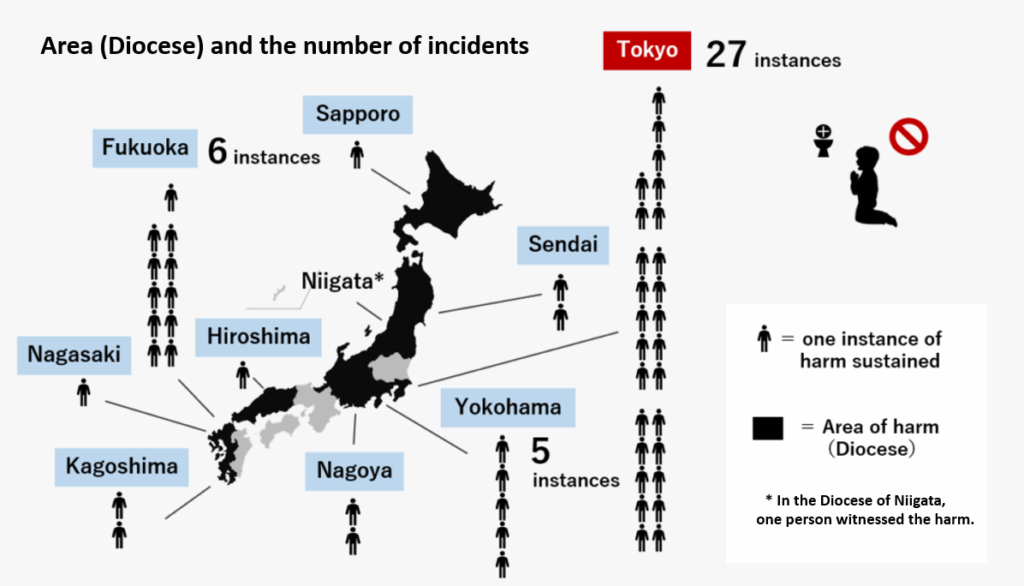
Click or Tap to Enlarge
Tokyo archdiocese accounted for the majority of victimization incidents (57% of all incidents), followed by Fukuoka and Yokohama dioceses.
In addition, incidents where the victim’s Communion posture was either “standing” or “both” were reported to have occurred in the Diocese of Sapporo, Tokyo, Yokohama, Nagasaki, and Fukuoka.
Combined data from Q2, Q3, and Q6: Time period, diocese, and number of incidents
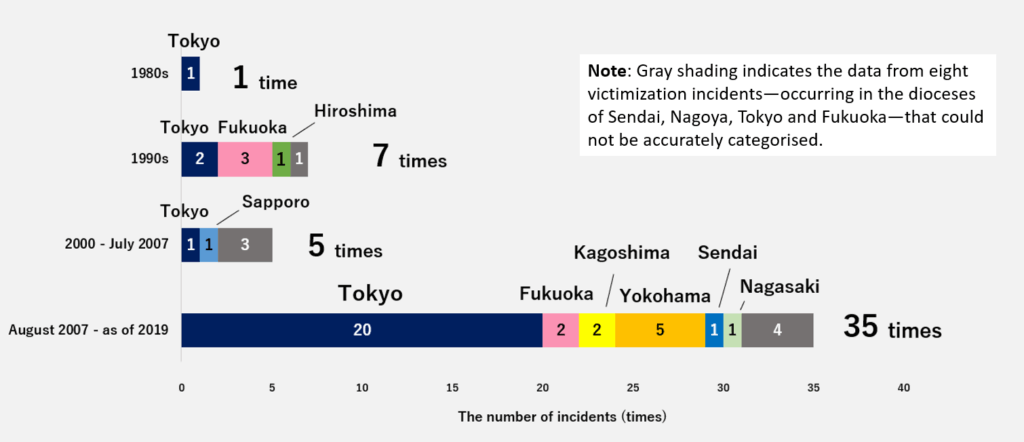
Click or Tap to Enlarge
Q7. What is your gender?
- Male: 8 (19 incidents)
- Female: 16 (31 incidents)
Note: All respondents stated their gender.
The pie chart below (Fig. 8) shows the ratio of victimization incidents encountered by male victims to female victims. (This does not represent the ratio of male to female victims.)
Female respondents constituted the majority, whether measured by the number of individuals affected or by the total number of incidents reported.
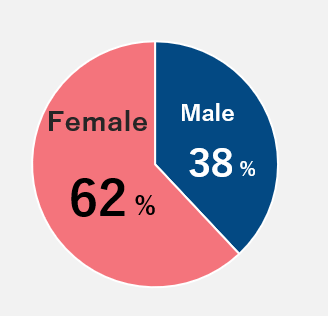
Q8. Was the location of the incident your home parish?
- Yes: 14
- No: 10
The options for Q9 differ depending on whether the respondent’s answer to Q8 is “yes” or “no.” I will first examine the responses of victims who had answered “yes” to being victimized at their church.
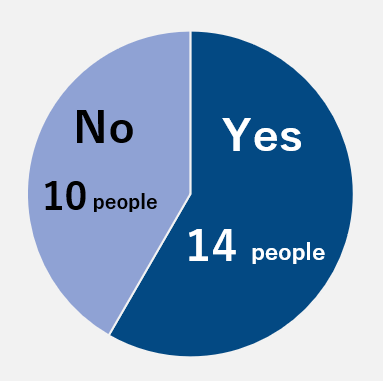
Q9. Please select the option that best describes your church life after you had been victimized.
Respondents victimized at their home parish
| Response | Number of respondents |
| I continued to attend the same parish church. | 6 |
| I began attending a different parish church due to the harm, without officially transferring. | 2 |
| I temporarily attended a different parish church due to the harm, but later returned to my own. | 3 |
| I was unable to attend any parish church for some time due to the harm, and later transferred to a different parish church. | 1 |
| Other (e.g., stopped attending church for unrelated reasons). | 2 |
From the results, it was found that 6 victims continued to attend the same church, while 6 victims experienced some form of negative impact on their church life as a result of their victimization (including having to attend a different church, temporarily attending a different church, or being unable to attend church at all for a period of time before switching to a different church).
Respondents victimized outside their home parish
| Response | Number of respondents |
| I continued to attend church. | 9 |
| I was unable to attend any church for a period of time due to the harm, but now attend church. | 1 |
The survey results of Q9 for both groups of respondents showed that many people continued to attend church after they had been victimized. However, the fact that two victims revealed that they were unable to attend church at all for a period of time as a result of their victimization is heartbreaking.
Q10. Please share any comments you may have regarding Communion-related victimization or the current state of the Catholic Church in Japan.
I received a variety of comments from the respondents, some of which were unbelievable and depressing.
- Even after reading the guidelines issued by the Catholic Bishops’ Conference of Japan, I see that they do not actually forbid kneeling. Yet some priests start with their conclusion already decided and twist the word “unity” to suit it—never even considering the possibility that we might all kneel and receive Communion on the tongue. They are determined to make everyone to stand and receive Communion in the hand at any cost. I can only believe that such a situation is driven by the forces of evil. (I tried to write in more detail about the current situation, but couldn’t send it because of the character limit.) I was also shocked, after seeing it happen several times at English-language Masses, to find that the priest remained seated and let lay ministers [Extraordinary Ministers of Holy Communion] distribute Holy Communion instead of doing so himself.
- The church I was attending at the time forbade kneeling; this rule was firmly imposed on me before my baptism, so I had to receive Holy Communion standing—though still on the tongue. However, after one Sunday Mass, when hardly anyone was around, the pastor came up to me in the lobby and made remarks that felt almost insulting. At a parish youth meeting, a curate sarcastically told me to stop receiving Communion on the tongue. (This occurred during the height of the Little Pebble controversy.) Nonetheless, Communion on the tongue was never officially banned in my diocese, perhaps due to the bishop’s guidelines.
- I no longer understand whether we are revering priests or honoring Holy Communion.
- I feel that we don’t have many chances at church these days to stop and think about how we should truly praise and worship the Lord. Because the Eucharist is the Lord Himself, I believe a major reason for this situation is that we aren’t clearly taught—either at baptism or afterward—what attitude we need when we receive Him. I’m sorry to say it, but it seems that not only the ordinary faithful but even priests haven’t been given enough guidance on this important matter.
- The diocesan bishops, or the Catholic Bishops’ Conference of Japan, should issue an official apology for their past unlawful actions and clearly state that kneeling may not be prohibited. Any priests or lay faithful who have obstructed or refused to allow the faithful to kneel must apologize personally to each victim and strive to heal the harm they have caused. An official document setting out these points should be widely disseminated to all pastors and faithful throughout the country.
- The Catholic Church in Japan is violating the intentions of the Vatican.
- I am a parishioner at XX Catholic Church. In 2018, during a morning Mass, when I wished to receive Communion on the tongue, the pastor reprimanded me, saying, “I’ll teach you how to eat properly at Mass.” He added, “At XX Catholic Church, many people receive Communion on the tongue, and many kneel as well, but I’ve made all the Vietnamese parishioners I serve stop that. Jesus is our friend. Why would you kneel to your friend?” Because of this, I started attending Mass at the neighboring YY Catholic Church and thought they had accepted me there. However, during Mass last week, the priest told me, “You must harmonize your posture with everyone else. Communion on the tongue is dirty; your lipstick gets on my fingers.” Now I can’t even go to YY Catholic Church.
- I want the Holy Father to know about this problem. We are not even allowed to kneel during the Consecration.
- According to some Catholics who were baptized around 1990, certain parishes run by religious orders in the Archdiocese of Osaka and the Diocese of Hiroshima allowed baptism only on condition that the candidates for baptism received their First Communion in hand (they were free to receive on the tongue afterward). From what I have seen, priests from religious orders seem to press more strongly for Communion in the hand than diocesan priests. It’s just a small personal observation, but I hope it may be of help.
- I was denied Communion on the tongue by a religious priest who was only temporarily assigned to the Archdiocese of Nagasaki and had spent many years elsewhere outside the archdiocese. In the Nagasaki Archdiocese, Communion on the tongue is still generally maintained. I am ashamed to say that children in Nagasaki have recently begun to think receiving on the tongue is odd, which leaves me deeply concerned about religious education.
- I wish they would stop.
Section B: Eyewitnesses (11 individuals)
This section summarises responses from individuals who personally witnessed incidents of victimization. A total of 11 respondents are included in this section: 9 individuals who responded only as eyewitnesses and 2 individuals who also appear in Section A as victims.
Q1 – Q6: Omitted
Original Article (in Japanese)
Q7. Please share any comments you may have regarding Communion-related victimization or the current state of the Catholic Church in Japan.
Below are several comments I received from eyewitnesses, all of whom belong to the Archdiocese of Tokyo.
Their troubling reports include incidents in which members of a parish liturgy commission forced baptismal candidates who wished to receive Communion on the tongue to receive Communion in the hand instead.
- I find it utterly unacceptable that kneeling—long recognized as the proper posture—has now been effectively banned in Japan. Even these so-called “Japanese adaptations” cannot justify it, for kneeling has been taken for granted ever since the Catholic faith first reached Japan centuries ago. Many of the faithful have not welcomed these “adaptations” at all; they have merely gone along with them out of necessity. What possible reason could there be to go so far as to abolish kneeling?
- I want to hear the reason from the priest himself who refused [Communion to the faithful in this way]. Why?
- During a lecture on the baptism ceremony conducted by a member of the liturgy committee [at my parish], catechumens who wished to receive Communion on the tongue were told, “We do not receive Communion on the tongue in Japan! It has been abolished!!” and that committee member compelled them to receive Communion in the hand.
These are the results of the survey. I believe this appalling situation has finally come to light.
Please pray for the suffering Catholic Church in Japan.
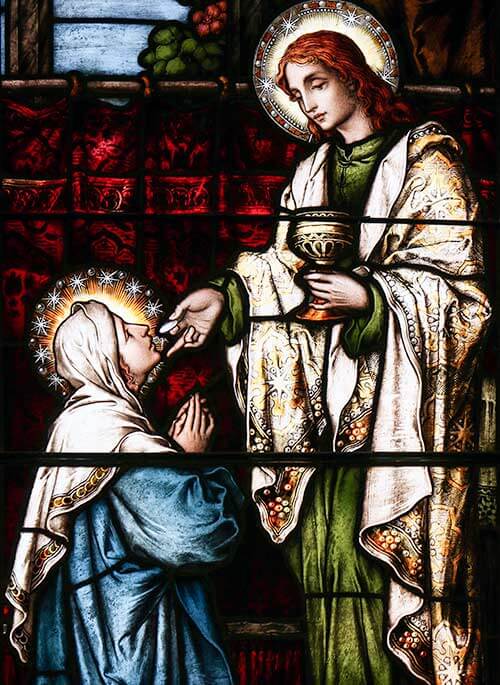
References
OFFICE FOR THE LITURGICAL CELEBRATIONS
OF THE SUPREME PONTIFF: Communion received on the tongue and while kneeling
 聖母奉献のアーカイブ
聖母奉献のアーカイブ
